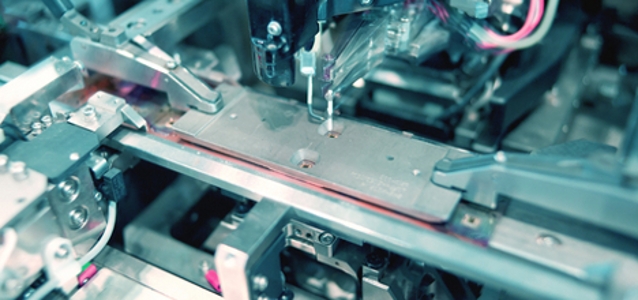
© pengyou93 dreamstime.com
Analysis |
How Bosch became No. 1
Most of the manufacturer’s growth, however, came from Bosch Sensortec, which focuses on consumer and mobile applications.
For instance, Bosch Sensortec not only dominated the accelerometer market for smartphones among Chinese handset makers, it was also supplying accelerometers into the Apple iPhone 5s and 5c, and the Apple iPad air. Bosch Sensortec was likewise the top supplier of pressure sensors for Samsung handsets and tablets, and it has started shipping in volume 6-axis inertial measurement units (IMU) for accelerometers and gyroscopes in a combo package to Sony, Samsung and HTC.
“Bosch cemented its position at the top in 2013, thanks to being the No. 1 supplier in automotive MEMS with a full portfolio of products, extending from pressure to flow sensors, accelerometers and gyroscopes,” said Jeremie Bouchaud, director and senior principal analyst for MEMS & sensors at IHS. “Bosch is also well-positioned in combo sensors that integrate accelerometers and gyroscopes for electronic stability control systems in cars, along with a growing presence in China.”
In all, automotive accounted for 74 percent of MEMS revenue for Bosch in 2013.
Bosch’s billion-dollar revenue marks the first time that a MEMS company reached this elevated position in light of its own products without counting MEMS foundry revenue. STM saw total MEMS revenue of $1.014 billion in 2012, but that included $220 million of MEMS foundry revenue, generated from making MEMS products on a contract basis for customers.
For STM, its revenue decline in 2013 was due mostly to a fall in accelerometer takings after the company lost its accelerometer business with Apple to Bosch, Bouchaud noted.
Some bright spots remained, however. STM’s 6-axis IMU revenue more than doubled because the manufacturer was the top supplier to Samsung and sole supplier for the Samsung Galaxy S4. Also, its MEMS microphone business rose 56 percent as STM expanded its customer base in handsets and tablets—from just Nokia in 2012, to the Apple iPad air and HTC One in 2013. STM started to ship accelerometers into automotive safety applications as well in 2013, and remains the dominant presence in the overall consumer and mobile MEMS market with 22 percent revenue share in that sector.
Other winners besides Bosch
After Bosch, a few other MEMS players also notched up wins in 2013. These included Knowles Electronics from Illinois, Freescale Semiconductor from Texas, TriQuint from Oregon, InvenSense from California, Murata from Japan, and FormFactor also from California.
For Knowles, at No. 5 in 2013, the company enjoyed the highest growth in revenue within the top 20, up a remarkable 48 percent. Knowles is the industry’s top microphone supplier, and its impressive growth comes from three factors: increased presence in the iPhone 5s and 5c after supplying two of the phone’s three microphones; a solid position in the booming Chinese smartphone market; and shipments of a new generation of higher-performance microphones at loftier prices to titans Apple and Samsung.
Freescale, the No. 8 player, has now recovered fully from the earthquake that struck its Sendai, Japan, fab in 2011. Freescale successfully completed the transfer of its MEMS production to the company’s Oak Ill fab in Texas, and it has been able to maintain strong partnerships with customers after the disaster, especially in airbags. Freescale is also growing its tire-pressure monitoring systems and accelerometer business for both the industrial sector and tablets in Asia.
TriQuint, at No. 9, was second only to Knowles in revenue growth for 2013, up a massive 46 percent. While it is only the runner-up in the market for bulk acoustic wave (BAW) filters, TriQuint grew its share of the space against main rival Avago Technologies in California’s Silicon Valley, the No. 6 MEMS maker overall last year. TriQuint supplies into the iPhone, but it is also expanding its presence with other original equipment manufacturers. The company is benefiting as a whole from the fast-growing market for 4G LTE handsets, which command BAW filters for high-frequency bands.
InvenSense, Murata and FormFactor all saw revenue grow in the double digits, ranging from 14 percent for Murata, to 29 percent for FormFactor, to 34 percent for InvenSense. InvenSense increased its share of the market with Samsung while also tripling its business with Chinese smartphone and tablet makers. Murata grew largely because of its revenue from the former VTI Technology, which it acquired in 2012. And FormFactor made its presence felt through MEMS-based probe cards for testing semiconductor wafers.
The other side: On the losing end
The winners last year were joined by a handful of MEMS makers that suffered revenue declines in 2013. Besides runner-up STMicroelectronics, the suppliers here included No. 3 Texas Instruments, fourth-placed Hewlett-Packard, No. 6 Canon of Japan, tenth-ranked Analog Devices; and Panasonic and Epson, both of Japan, further down the list.




